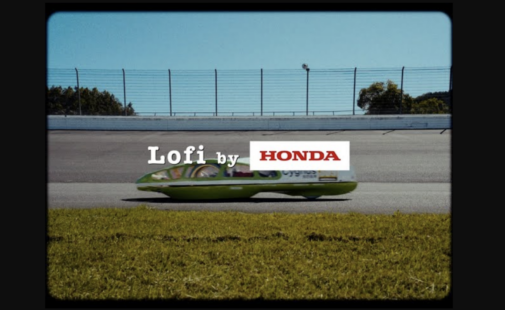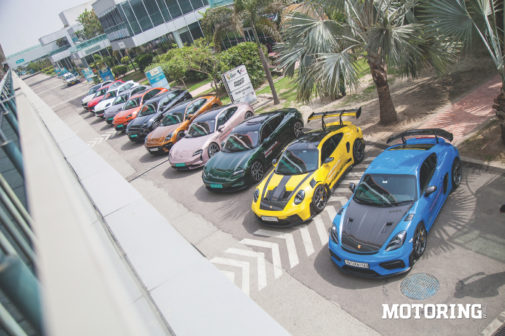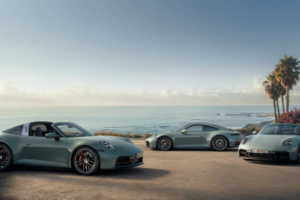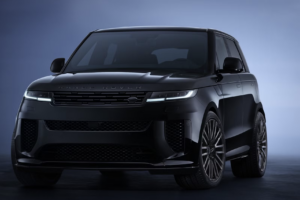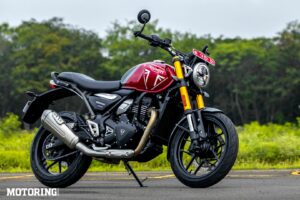Text by Santhosh Vijay
I’ve never been a morning person. Especially so on weekends, and after a point, I found myself agreeing to more of my wife’s plans to do with brunches. On weekdays, I’d stay home contemplating death and generally think morbid thoughts concerning all the shit going on in the world. Over time, the weekend brunch became the highlight of my life in Houston, Texas, and hence a major worry — how did I go from living every minute of my life in Antarctica to becoming this miserable stiff-limbed creature? Post-expedition blues.
I remembered Captain Louis Rudd MBE, formerly of the SAS, telling me at the Union Glacier in Antarctica that after every major expedition, one goes through a period of depression when faced with regular life. The only way to beat it was to plan the next adventure.
A normal motorcycle ride wouldn’t solve my problems; I had tried it already. What I needed was a bone-freezing expedition where you had to balance two wheels on solid water while struggling for oxygen. So it had to be the Himalayas, more so in winter since the water needed to be solid. It also had to be on the upcoming Himalayan, a no-brainer.
If you are risking life and limb, you need to do it on something cool and a prototype Himalayan is polar cool. One also needs a partner in crime, and who better than the aforementioned Louis, the only person to have crossed Antarctica
twice, solo and unassisted, on skis? twice, solo and unassisted, on skis?
The one thing I needed was a sign-off from the brand bosses in charge of the new Himalayan, Adarsh and Mohit, and for that, I needed a valid reason. ‘We’ll ride across rivers and lakes while battling blizzards to cross snowed-in passes for great content and a nice story,’ might not seem like a good enough pitch, but the brand team at Royal Enfield loves such reasons. Within two weeks of getting the
go-ahead, I left Houston and its problems behind and was sitting in the warm and ostentatious Grand Dragon hotel in Leh (they have heated flooring!), awaiting the 40-odd boxes containing two dismantled Himalayans that were flying in as special freight.
Part 1: Have fun acclimatising.
Put the bikes together and ride from Leh to Chiktan. Find lots of snow near Shashi La, camp for the night and head back to Leh via the Kargil highway. Get off the road at some point, jumping onto the Indus. Ride on the river and hopefully not sink.
Part 2: Have more fun.
Pray for a blizzard and set off to cross Khardung La. Head down to Hunder, play on the dunes, stay for a night in the relatively warmer valley and then continue toward Pangong Tso via Agham and Merak. Ride across the frozen lake and then cross Rezang La to get to Tso Moriri. Finish with a lovely high-speed ride back to Leh. All we had to do was ride a thousand miles in frosty conditions, climb and descend snowy passes, try not to fall on frozen water crossings, and spend the evening drinking whiskey and playing chess. When the plan involves praying for blizzards, nothing can go wrong, right?
The Ride:
For probably the first and last time in my life, I was on time for an early morning start. The fear of the bike getting photographed by someone was probably the reason for it, and hence we set off towards Chiktan at 8 a.m. (time is relative and 8 a.m. is early for me). The roads in Ladakh during winter are like a gift from God. Traffic was very sparse, and we crossed Khaltse in no time and took the back road to Chiktan via Achinathang and Sanjak. The support drivers assured us that the road would be dry and hence we didn’t worry about having the snow chains handy.
The information was correct to a point; however, right after Sanjak, on the narrow road to Chiktan, we hit snow mixed with dirt which looked like light-coloured clay and it took us a good 15 minutes to understand why the bike began to slide during gear shifts. The time of the day and the lighting in the valley added to the confusion until the clay was not brown anymore — it was white.
This, I could recognise despite being hungry and cold. And since the vehicle carrying the snow chains was way behind, and we mostly had to climb, we decided to press on rather than wait for the chains.
Feathering the clutch through every corner to make every change in velocity smooth we had almost reached the campsite when I saw an Alto with its bonnet aiming at me and its wheels pointing the other way. I don’t think the driver was expecting motorcycles to come up that road and his eyes were probably wider
than mine were at that instant. How he managed to miss me with that front-wheel-drive coffin is a question that I’ll never be able to answer.
Camp was next to a frozen stream and we were at a relatively low 3000-metre altitude which is great for getting used to the thin air. The temperature dropped to -6 °C by 8 p.m. and with Talisker providing inner warmth, we spent the evening walking around the village before crawling into our sleeping bags. (The
trick with a sleeping bag is to warm it up before you use it. Sticking a hot water bag 30 minutes before you get in will ensure that you enter Dreamland in 5 minutes.)
In the middle of the night, I woke up to what I thought were wolves howling and forced myself back to sleep. The one thing I love about camping with a crew is the fact that you can get out of your tent and someone will hand you a cup of coffee. I love these little luxuries. It had snowed a little in the night and the temperature was now -20 °C. The motorcycles were cranking but wouldn’t fire up, and we had to trick the ECU into thinking the temperature was higher — lots of boiling water splashed onto the throttle bodies got the job done. Now it was time to go looking for some serious snow, and we found plenty of that just 8 km ahead of where we had camped.
Climbing a twisty snow-covered off-road track, we reached the top of a hill that had a decent flat section. With the chains, the Himalayan seemed to be laughing
at the task it was assigned. After a couple of cigarettes and a gazillion Photographs, we headed towards Lamayuru. The Kargil-Leh section is one of the best mountain roads in the region with very few blind corners. Add the fact that there is very little travel during the winter, one only needs to look out for army
vehicles which are mostly disciplined and stick to their lane. Hence we went all out and were doing triple-digit speeds in places where you wouldn’t want to cross 80 kph during tourist season.
However, speed brings its own set of issues. The windchill at 100 kph when the ambient temperature is -10 °C is pretty severe. Even with heated gloves, we had to stop every 60 km or so to get the blood flowing in the fingers before the pain got excruciating. The further we got from Kargil, the warmer it was, until we crossed Nimmu and spotted the frozen Indus. I’ve always been fascinated by the
Indus river. As a child, I couldn’t understand how the river flowed upstream from Mt Kailash, as in my mind the ground was higher as you went north. Over the years spent riding in the Himalayas, I understood the topography of the region and the fact that a Mercator projection can be misleading at times. Hence the Indus is special to me and I’ve always wanted to get really close to it, and the fact that I have the swimming ability of a lead brick meant that it had to be when it was frozen.
Now, I’ve ridden on glaciers, but riding over a frozen river is actually scary. One can hear the water flow under the frozen surface, carrying what I assume were chunks of ice which produced scary metallic thunks, along with the groaning and
creaking of ice sheets. The water could’ve been frozen to a depth of 6 feet, but it was still unnerving and took some time getting used to. There was a good 6 inches of snow on the hard ice surface and the snow chains worked very well… as long as we didn’t lean the bike over too much (mental note to get studs the next time around). Having ticked off the list, we got back to the Grand Dragon; the hotel, I mean, not the head of the Klan.
Acclimatisation complete, it was now time to really have fun. Waking up to a bright and sunny Leh, I was a little disappointed before looking north from the terrace. The sky was cloudy and it looked like it was snowing up in the mountains. Khardung La is about 50 km from Leh by road; however, the straight-
line distance couldn’t be more than 25 km. The temperature difference between these two places, which we would find out later, was 26 °C. Leh was at -6 °C, and you can do the maths. While that lifted my mood, news came in that the authorities had stopped traffic to Khardung La on account of heavy snowfall, and
in no cases would motorcycles be allowed to go to Hunder.
As is the case with most restrictions in India, a little persistence followed by cajoling will get the roadblocks removed. We promised the authorities at South Pullu that we were equipped to handle the weather and set off to Hunder. The first few miles were of no significance, but we soon hit a completely iced road.
BRO had cleared the road using a snowplough; what this does is compact the snow into ice, which poses no harm to four-wheelers, but isn’t all that great for motorcycles. Once again we found ourselves ahead of the support vehicle, and
since it was all uphill we decided to stop on the pass to swap wheels. In hindsight, that was a wrong decision, as by the time we reached the top of the pass, visibility was down to zero and the wind was so strong that rolling a cigarette was impossible.
Changing wheels at that temperature and altitude took us more than an hour, and by the time we were done, our fingers were pretty useless. The road conditions were trickier going to North Pullu and the gradient also made it challenging to arrest the inevitable slide when we tried to slow down or change
direction. I still remember the incredulous look the people at North Pullu gave us when we rolled into the checkpost. Guard: ‘Aren’t you feeling cold?’ Me: ‘A little, but I’m also having fun!’
Luckily, there was one functioning kitchen that served hot coffee and Maggi which brought back some warmth. Learning that the roads were dry again in a couple of kilometres, we swapped wheels again to conserve the chains and headed towards Hunder where we would spend the night before heading to Pangong Tso. Hunder is relatively warm even in the winters and also makes for
excellent stargazing. However, the cloud cover killed any such plan but also resulted in a slightly warmer evening. Since we had found a partly functioning hotel in Hunder, we didn’t have the camping crew with us. The plan was to head towards Durbuk the next day, and the crew would arrive and set up camp at
a suitable location (any place with running water) of which there were few at that time of the year. This is when the mountains had other plans; the crew was supposed to leave Leh and cross Wari La to get to Durbuk, and it snowed so much that both Khardung La and Wari La were shut for two days.
We learnt of this while we were crossing Agham. The ride from Agham to Tangste is one of the last few stretches in this region that can be termed ‘off-road’, and with its innumerable water crossings, it is a real treat. Having decided to worry
about the camp later and press on, we soon came across the first frozen water crossing on an angled road. It looked like the river was frozen in an instant as there were ripples on its surface and because of the nature of the road, the slope was perpendicular to the path.
Once again, we were doing this on tyres without chains as swapping wheels didn’t make sense. To get across, we took a diagonal path aimed towards higher ground and the lateral slide, while the bike’s forward movement ensured we didn’t slide off the road. It was nerve-wracking the first couple of times, but soon we felt comfortable and actually looked forward to more of these. Getting to Tangtse, we found a villager who let us use his tents for the night and also provided us with food. We decided to stay put until we heard from the crew who were stuck at Wari La for the night. Back to the Talisker and chess, then.
Morning brought it with good news. Wari La was open again and we let them head towards Merak to set up camp. Merak was not a place we intended to camp earlier and this change was made because of the holiday up at Wari La. Reaching the campsite, one of the crew asked me to get Louis to stay in the kitchen tent for some time. Puzzled, I asked him why, and he let me know the reason — it had skipped our minds that Louis was not an Indian citizen, and Merak was not a place he could stay overnight (it is very close to the border). To top that, our camp was surrounded by the army, RAW and ITBP camps.
My first reaction was to just hide Louis until it was dark and carry on quickly the next morning; no one could ever accuse me of being naive until now. Within 15 minutes of our arrival, two gentlemen walked up to the camp and asked for Louis by name. Since we had secured permits in Leh and had furnished our plan to the authorities, every checkpost of significance knew of us and was tracking us. They were expecting us to be there the previous day. Unsure as to what
would happen, we were relieved when they understood our situation and let
us stay for the night. Another night of carousing and chess before we crossed Rezan La and headed back to Leh.
Setting off leisurely, now that we didn’t have to worry about being spotted, we reached the Rezang La war memorial. I was hesitant about visiting the place as I didn’t want to waste time, but the army personnel insisted that we stop and I’m glad we did. The story of Major Shaitan Singh and his 125 soldiers of 13 Kumaon is spectacular. The army has an AV clip they play and towards the end of it pretty much everyone was in tears. If you think riding in the winter is tough, imagine fighting 1300 soldiers in adverse conditions. Feeling grateful that Rezang La was still on the Indian side of the border, we headed up the pass riding through a huge herd of grazing yaks.
We soon headed towards Nyoma and further on to Mahe. The road was pretty much tarmac from here and the army was the predominant sign of civilisation until we reached Karu. I do admit that we ditched our plan of crossing Pologongka La and hitting the More Plains as originally planned, but that particular stretch was completely snowed in. We could’ve probably managed to cross it, but then Tanglang La would have been impossible. One last night of camping near a hot spring we were back in Leh.
Leh felt unbearably hot at 6 °C; we ditched our base layers and down jackets for T-shirts and shorts and spent the next two days dismantling the motorcycles and visiting Lehchen, the only watering hole in town. And after plans were made for the next winter, it was time to head home — and let my wife take me out to brunch again.









